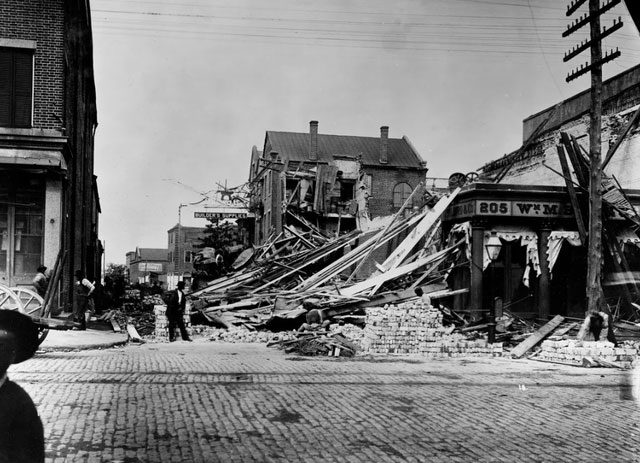After major earthquakes, aftershocks typically occur within hours or days. However, the aftershocks from some of the largest earthquakes in U.S. history may still be ongoing, nearly 200 years later.
The aftershocks stem from three earthquakes that occurred near the border between Missouri and Kentucky between 1811 and 1812, and another earthquake in Charleston (South Carolina) in 1886, which likely continue to this day, according to a report published in the journal Geophysical Research: Solid Earth.

Buildings collapsed in Charleston (South Carolina) during the 1886 earthquake.
One of the areas scientists are focusing their research on is known as the New Madrid Seismic Zone, which includes the city of Memphis (Tennessee), the Mississippi River Valley, and other regions, including Charleston and the surrounding coastal plains.
Report author Yuxuan Chen from Wuhan University (China) states that researchers still do not fully understand the seismic activity in these relatively stable areas of North America, and the mechanisms behind it continue to be debated within the scientific community.
The research team found that up to 30% of all earthquakes from 1980 to 2016 near the Missouri-Kentucky border, all measuring 2.5 on the Richter scale or higher, are likely aftershocks from the trio of earthquakes that occurred in the region between 1811 and 1812, with magnitudes ranging from 7.3 to 7.5 on the Richter scale.
In the case of the Charleston earthquake, new findings suggest that about 16% of the earthquakes in the Charleston area today are thought to originate from the earthquake that occurred in 1886, which had a magnitude of 7.0 on the Richter scale.
Determining whether modern-day earthquakes are aftershocks of previous strong earthquakes or entirely new and distinct events is crucial for understanding the risk of natural disasters in these areas in the future.


















































